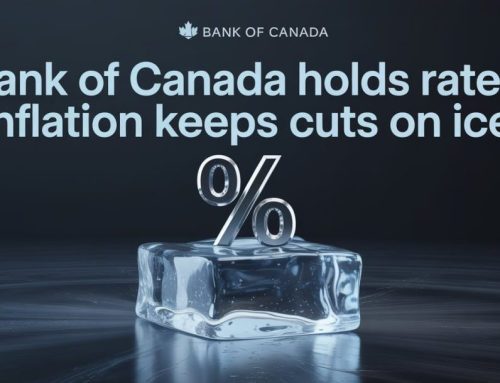Clients often tell me that they are only interested in having a mortgage through one of the big banks. The first question I’ll ask in this situation is simply… ‘Why?’
Everyone has their own ‘why’, but usually, the answers are fairly similar. It’s usually due to some sort of false belief about non-bank lenders. Often something they were told by their parents, by their friends, or very commonly… by their bank.
The latter is my personal favourite of the three. It’s only natural for a bank to sell against their competition! In many cases, it’s false information, or even a flat out lie.
There are many myths about non-bank lenders, so it’s important to distinguish myth from reality.
Myths about non-bank lenders
- There are hidden fees and restrictions.
- If you miss a single payment, they will take your house.
- If the smaller lender goes out of business then you will be facing a big headache and will have high fees to pay.
Nothing, of course, could be further from the truth.
Are There Hidden Fees?
Without exception, there are zero hidden fees, or additional costs of any kind. The cost is no different than getting a mortgage from a big bank. The ironic part is I’ve seen people pay more than $10,000 in extra interest over their term, just because they are concerned about being charged hidden fees that do not even exist.
What Happens if The Lender Goes Out of Business?
If the lender happens to go out of business, their mortgage portfolio would just get taken over by another lender. All the same terms and conditions would remain intact, and the only difference to you is that the logo on your mortgage statement changes. You wouldn’t even so much as need to sign a form.
Small Lenders?
Some of these ‘small’ lenders are also quite large. Industrial Alliance is a publicly traded company that has been around for over 125 years and has over 5,000 employees across Canada. They have over $160 billion in assets under their management. MCAP has over $70 billion, and First National has around $100 Billion under administration.
Banks will often refer to any lender who is not a bank as second tier, second rate, B lenders, or private lenders. These are all words that have been created by the banks to try to make non-bank lenders sound inferior. They may try to make it sound as if the money coming from a big bank is of higher quality than that of other lenders, which of course does not make any sense.
Mortgage lending is a heavily regulated industry, and there is absolutely zero additional risk involved with going with a non-bank lender.
What About Additional Restrictions?
It is true that some lenders can have additional restrictions, however these can be found with major banks, as well as with non-bank lenders. Here is a list of common restrictions found with mortgages, and which lenders carry them:
- Lack of bridge Financing (Industrial Alliance).
- Fully closed mortgages where you can only break the mortgage early if you can sell your home (some products with MCAP, CMLS and BMO).
- Higher penalties to break your mortgage early (All of the big banks, and Industrial Alliance (fixed mortgage rates only), plus some products with Merix and RMG (fixed or variable).
- Limited prepayment privileges (Industrial Alliance and RBC)
- Using a higher prime rate then the rest of the mortgage industry (TD).
- Collateral mortgages (TD, Tangerine and National Bank). Plus, a mortgage from any lender that contains a HELOC or second component of any kind).
- Variable rate mortgage that is compounded monthly as opposed to semi-annually (TD, RBC, BMO, Merix, and CMLS Financial).
As you can see from the above list, additional restrictions can occur with both banks and non-bank lenders alike. Aside from the list above, most mortgages are fairly similar.
Choosing Between A Bank and A Non-Bank Lender
Banks definitely serve their purpose, and I place many of my clients with them. Sometimes they are the better choice, however there are often better, and more cost-effective options available.
For the most part, spending thousands of dollars more to go with a big bank doesn’t make a lot of sense financially. The only real benefit to you is that you can have all your accounts with the same institution and can view them all on the screen together. Not much more…. other than recognizing the logo on your mortgage statement. I talk a lot about differences between banks and non-bank lenders in my book, Beat The Bank – How to Win The Mortgage Game in Canada.
Remember, they are lending YOU the money and not the other way around. As a mortgage broker, I deal with both banks and non-bank lenders. Personally, it doesn’t make any difference to me which lender I put my clients with, so I’ll always take the time to explain the differences to ensure they fully understand the mortgage they are getting into. This allows them to make an educated decision based on factual information, rather than a false belief about a specific lender.
Always do a bit of research before taking advice about competing options at face value. Make sure you take a bit of time to ask your mortgage agent, or bank mortgage specialist questions to get an idea of their experience level. Never assume that you’re getting good advice just because your advisor has a nice, big and shiny bank logo on their business card. Just as you shouldn’t assume you are getting good advice just because you are dealing with a licensed broker.
There are good and bad on both sides. Regardless of who you choose to handle your mortgage for you, always take the time to ask questions, so you know exactly who you’re getting the advice from.








Big banks are ruthless when it comes to taking their money back so I would suggest someplace where they give you personalized attention. I would prefer the smaller setup.